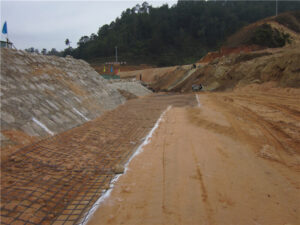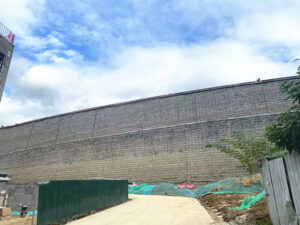Comprehensive Overview of Geosynthetic Applications
Here, we introduce a range of applications for geosynthetic materials, including reinforced soil retaining wall, road construction、gravel driveway、pavers、subgrade enhancement & stabilization, landfill, pond、garden ponds, ditch、channel、 french drain、drain pipe、soakaway, riprap、seawall、dam、river bank & shoreline protection, slope & soil stabilization、reinforced、protection、confinement、erosion control、soil separation, and more
In these applications, you can find one or more types of corresponding geosynthetic materials, covering a series of products such as geomembranes, geotextiles, geogrids, and geocells.
You can choose the appropriate geosynthetic material according to the specific application. Whether you’re seeking reliable seepage control solutions or high-performance engineering materials, we have the solution to meet your needs.




